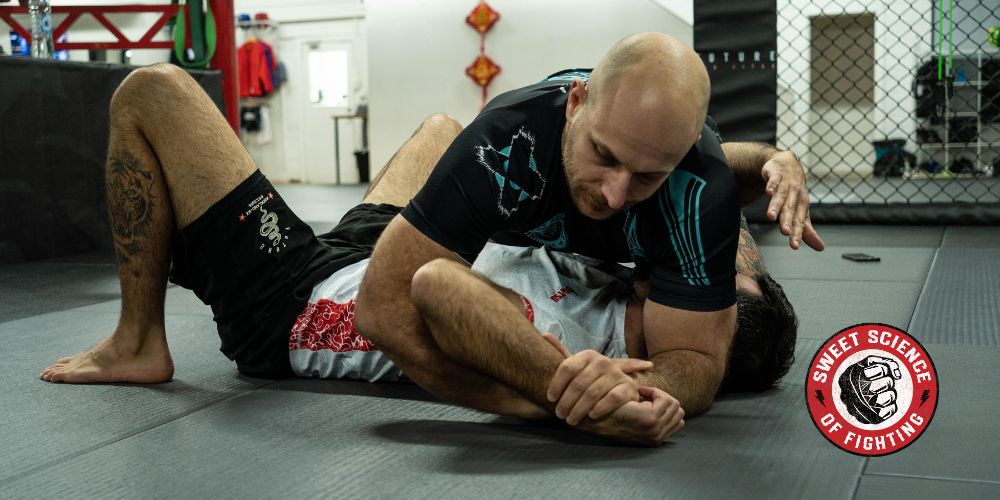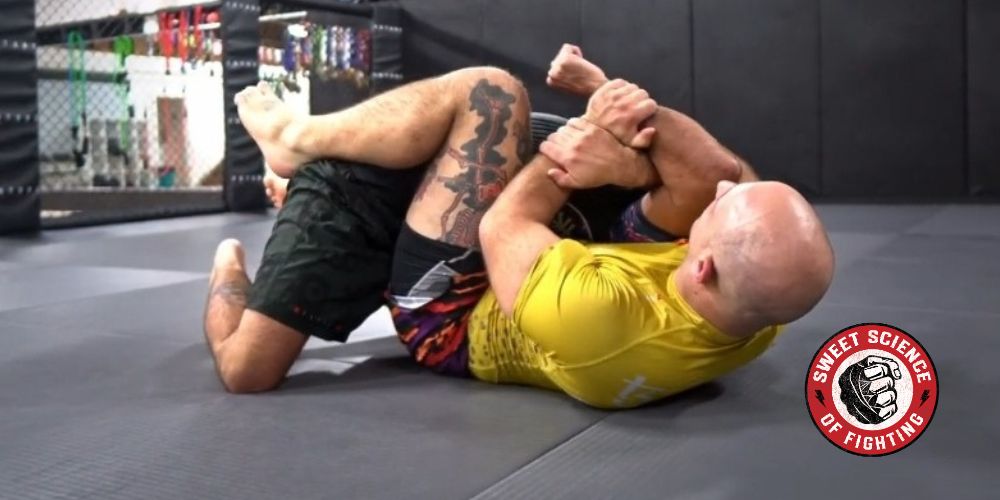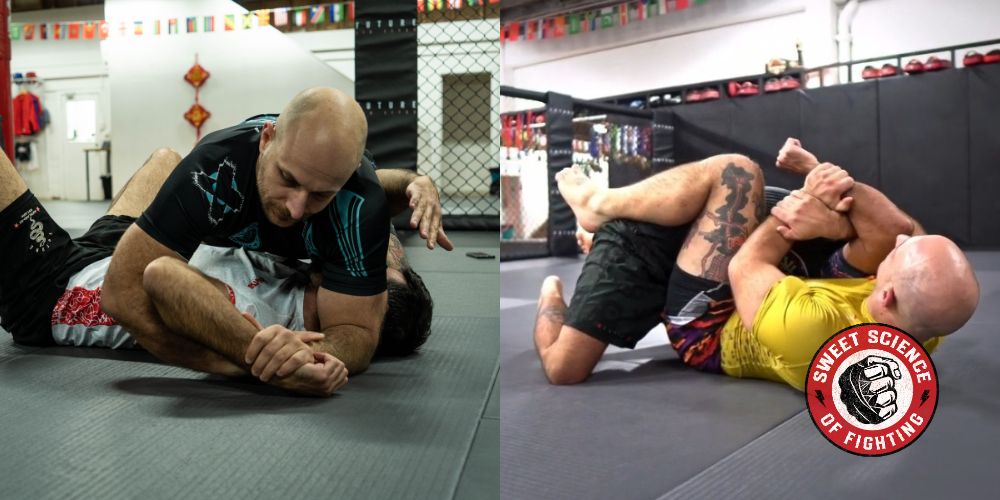Despite being visually similar, the Americana and the Kimura differ dramatically in their potential uses beyond purely being applied as a submission.
Both submissions apply pressure to the shoulder but offer different implications beyond their primary use of eliciting a submission from our opponent.
As our opponents become better equipped, both offensively and defensively, it becomes increasingly challenging to submit them. Often, showing your intent to apply a submission is enough to elicit a strong defensive response from your opponent.
As a result, you will often need to ‘chain’ or combine attacks together and link between them to find an opportunity to submit them. The concept of the double attack or ‘dilemma’ has been developed extensively by top-level grappling competitors who often put their opponents between a rock and a hard place, forcing them to pick their own poison.
Within this context, we’ll be exploring the implications of the Americana and Kimura. And there’s more to both techniques beyond simply trying to tap out your opponent.
The Americana

The Americana (aka key lock) as a submission is not one of the most effective submissions beyond a beginner level. Practitioners start to understand that much of the pressure generated by this shoulder lock can be alleviated with effective bridging and hip escaping.
However, the Americana is a great positional tool that we can use to elicit easily predictable responses from my opponent. One such example is using the Americana from the mount position.
Applying the Americana from the mount will cause your opponent to turn towards the armlock, creating good back exposure that we can use to create an S-Mount and either continue to attack more effective submissions from the mount or begin taking the back.
The enduring theme of any form of offense is that your opponent must defend against it if they hope to stay alive.
Once you know what the defensive response looks like, you can begin to anticipate that and even trigger it with your offense.
5 Step Blueprint To Build A BJJ Strength Workout To Demolish Your Opposition
Learn how to plan your strength training to maximize transfer to the mats.
The advanced practitioner not only understands this but consistently places his opponent in a pattern of responses that they have anticipated and already have an answer primed for.
From the majority of top control positions, the Americana can be used to create exposure that leads you to more effective control positions and submissions.
Considerations must be made for counter sweeps when you overcommit to the submission attempt; overreaching or exposing your center of gravity to attempt a submission is ill-advised.
The Kimura

The Kimura has many uses beyond purely being used to submit an opponent.
Often, a stronger practitioner will be very challenging to submit with the Kimura if they can connect their hands in front of their body and deny the rotation of the locked arm behind their back.
This defensive look, however, allows us a range of options and pathways to develop stronger control positions and submissions. When our opponent connects both hands to defend an armlock, they sacrifice their ability to deal with our limbs for more security.
This allows us to move around the shoulder, back, and head of our opponent with ease, creating opportunities for back exposure, north-south, and standard mounts.
Vagner Rocha is a notable advocate of the ‘kimura trap’ system. He often uses a defended Kimura attempt to take his opponent’s back when they double down on defending the lock with both hands.
Only a few positions allow us total control over a quarter of our opponent in no gi grappling. Controlling the shoulder and head using a Kimura grip is one of a few ways to do this consistently, making the technique a staple for many grapplers across every discipline and ruleset.
The Kimura is so effective that it has been ruled illegal to use in sport sambo due to the risk of injury.
Kuzushi Sakuraba also famously broke Renzo Gracie’s arm with a Kimura. Having never been a jiu-jitsu practitioner, Sakuraba was originally shown the move in Catch Wrestling.
He quickly made it a staple of his grappling arsenal when fighting in Vale Tudo fights and early MMA.
Americana vs. Kimura: Which Is Better?

As pure submissions, it can be argued that the Kimura is superior to the Americana. However, both have wider implications beyond purely their immediate effectiveness.
Both techniques offer us opportunities to funnel our opponent down predictable pathways, which we can use to improve our position or develop deeper, more efficient, fight-ending submissions.
We must always remember that grappling, particularly jiu-jitsu and submission grappling, is about more than just applying a submission and hoping it works. It pays to have a backup plan and to consider building a dilemma for your opponent to try and solve.
The best defense is offense, not just because it pays to always be on the attacking tempo, but because through our offense, we can create traps and better predict the reactions we will get from uneducated and educated opponents.
The Kimura and Americana offer you ways to do this and a more effective path to victory through them.

